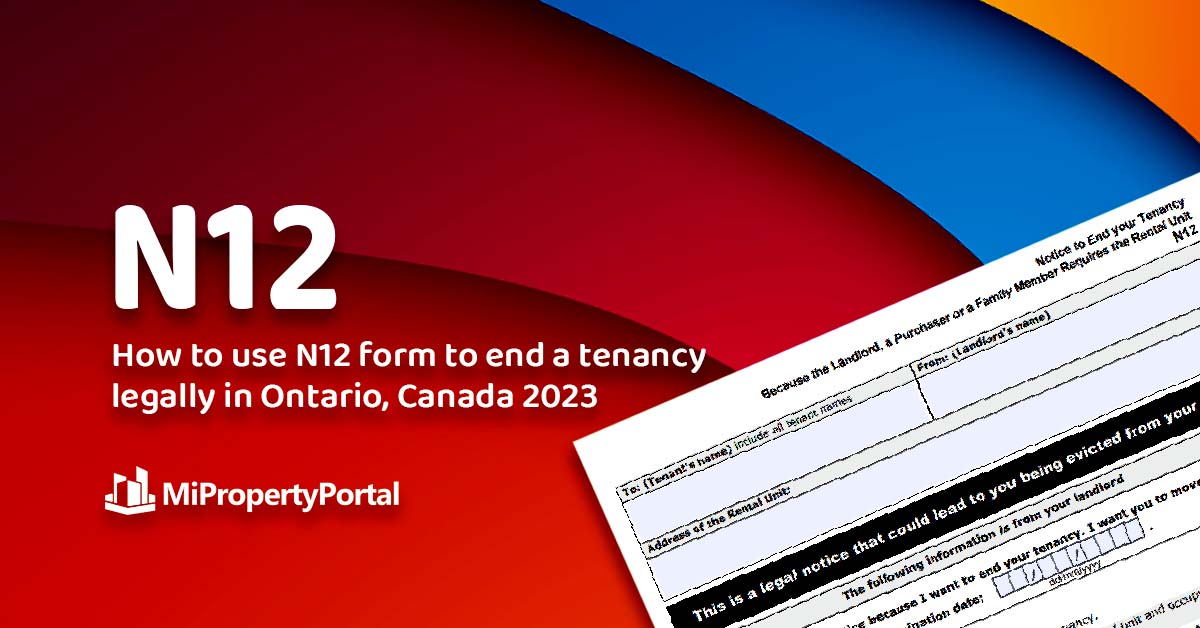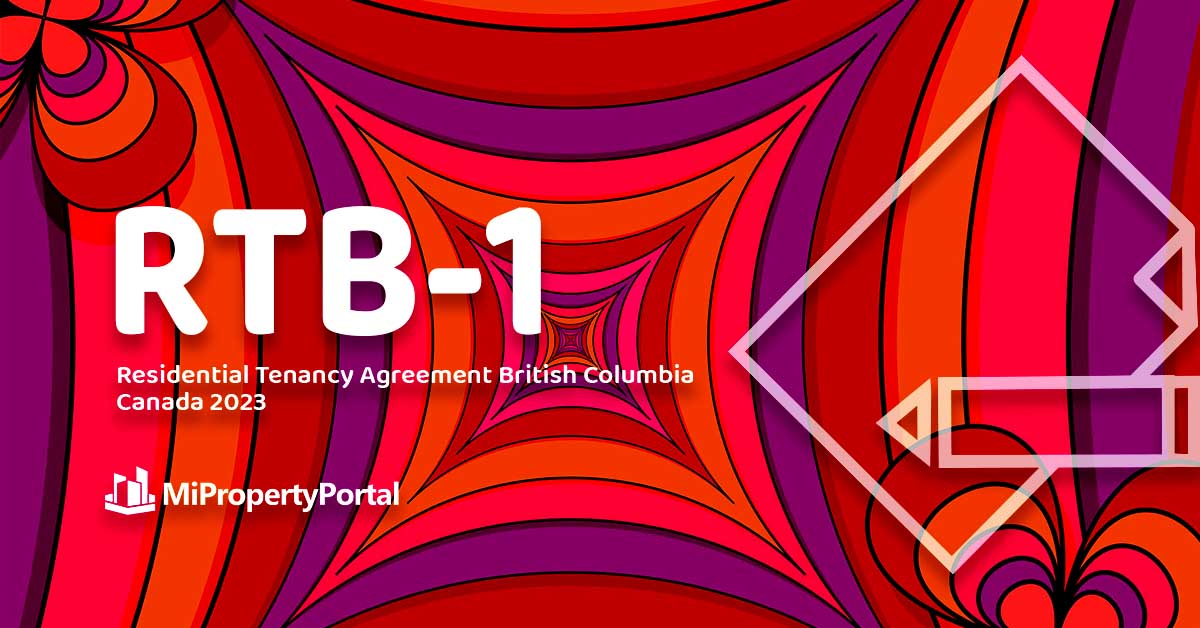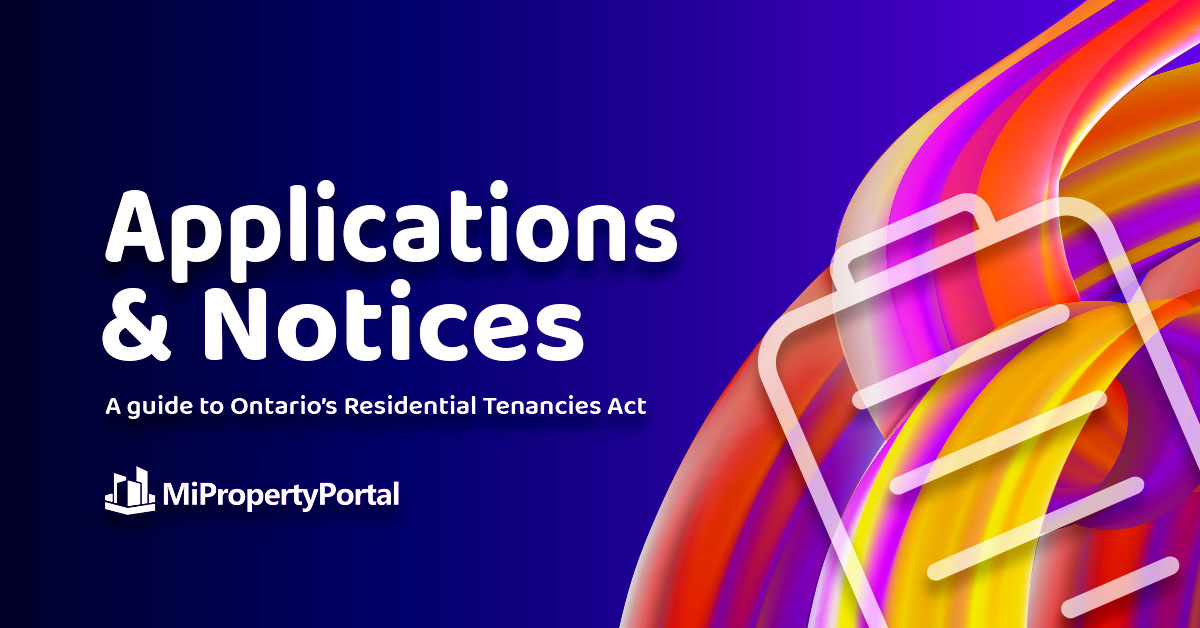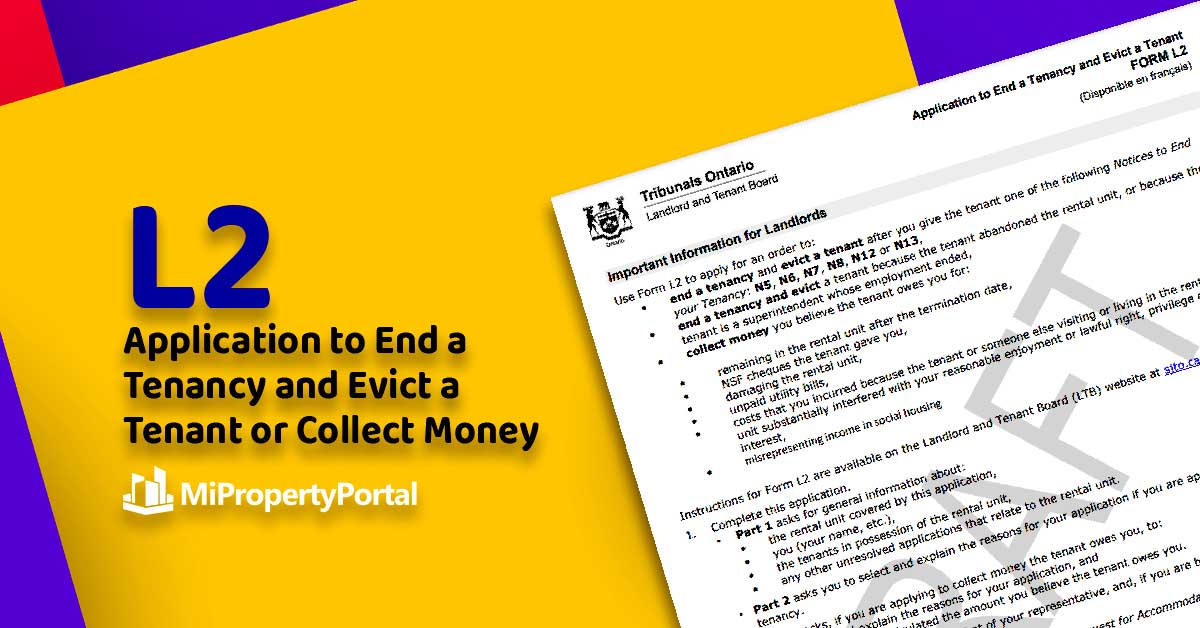In LTB Forms
How to Use Form N12 to End a Tenancy Legally in Ontario, Canada 2023

What is the FORM N12 Notice to End your Tenancy Because the Landlord, a Purchaser or a Family Member Requires the Rental Unit Ontario Canada 2023?
The N12 Notice To End a Tenancy in Ontario Canada is one of the few legal ways to evict a tenant in Ontario, Canada. If the person serving the notice is moving in or their family is moving in, the tenant is entitled to only one month’s compensation.
However, if the tenant opposes the notice, the landlord or the person moving in will need to prove they are moving in, usually in the form of a signed affidavit. This article discusses how the N12 affects tenants and landlords and some little-known facts about this notice to end the tenancy.
Click here to download the PDF of Form N12 Notice.
When Can Landlords Use Form N12?
FORM N12 Notice evicts a tenant because the landlord, purchaser, or family member intends to move into the unit. The landlords must give 60 days notice to the tenant from the end of the rental period.
Contact us for a software demo to streamline your tenancy m

anagement process!
The Residential Tenancies Act allows landlords to use Form N12 in 3 situations mentioned below:
Landlord’s Own Use
Form N12 can terminate the tenancy if the landlord or a member of their close family intends to reside in the rental property. They must, however, provide the tenant with a written notice of termination at least 60 days before the date mentioned in the notice.
Purchaser’s Own Use
In case the buyer or an immediate family member wishes to occupy the rental property, Form N12 can be used to terminate the tenancy. However, the buyer must have already agreed to purchase the rental property before serving the tenant with a notice of termination.
The buyer must give written notice of termination at least 60 days prior to the stated termination date.
Conversion Of Rental Unit
When a rental unit is intended to be destroyed or converted for non-residential purposes, the landlord may terminate the tenancy with Form N12. However, before serving the tenant with a notice of termination, the landlord must obtain all necessary permits and approvals.
Additionally, the landlord must provide a written notice of termination at least 120 days before the termination date mentioned in the notice.
Important Information for the Landlord
It should be emphasized that the landlord can use Form N12 only for the reasons stated. The tenant can challenge the notice by applying to the Landlord and Tenant Board (LTB) if the landlord fails to comply with the regulations regarding using Form N12.
There can be severe repercussions if the landlord serves the notice in bad faith or fails to comply with the regulations. The tenants have up to one year from their move-out date to start a Bad Faith application with the LTB and take legal action against their former landlord, seeking damages of up to $50,000 (or up to $250,000 for corporations).The Provincial Offences Act may charge and penalize the landlord as well.
Click here to learn more about the MI Property Portal software and ensure legal compliance in minutes.
How to Complete the Form N12 Notice?
Completing Form N12 correctly is crucial to ensure that it is legally valid and effective in ending a tenancy in Ontario, Canada. Here are simple step-by-step instructions to help you fill out the form accurately:
-
Identify the Parties
Start by providing the names of the landlord(s), tenant(s), and the rental unit’s address at the top of the form. Be sure to spell the names correctly and provide accurate contact information.
-
Select the Appropriate Termination Reason
Choose the right termination reason by checking the box that aligns with the Residential Tenancies Act. This could be “Landlord’s use,” “Purchaser’s own use,” or “Conversion of the rental unit.”
-
Provide the Required Notice Period.
Specify the termination date and the required notice period based on the termination reason in the designated fields. For example, if the termination is based on the landlord’s use, the notice period is 60 days. If it’s based on the conversion of the rental unit, the notice period is 120 days.
-
Provide Additional Information (If Applicable)
If the termination is based on the landlord’s or purchaser’s own use, provide details about the intended occupancy, such as the name of the person occupying the unit, their relationship to the landlord/purchaser, and the reason for the occupancy.
-
Sign and Date the Form
As the landlord or their authorized agent, you must sign and date the form at the bottom to certify the accuracy of the information provided.
Common Mistakes to Avoid
Incorrectly identifying parties: It’s essential to accurately provide the names and contact information of the landlord(s) and tenant(s) to avoid any confusion or disputes.
Incorrectly selecting termination reason: Choose the correct termination based on the Residential Tenancies Act to ensure the form is valid and legally compliant.
Inaccurate notice period: Double-check the required notice period for the specific termination reason and ensure that the date of termination and notice period is correctly specified.
Tips for Ensuring Accuracy and Clarity
Read the form carefully: Take the time to thoroughly review the form and understand the information being asked for before filling it out.
Use clear and concise language: Provide accurate and concise information without technical jargon or complex language to ensure clarity for the landlord and tenant.
Keep a copy for your records: Keep a copy of the completed Form N12, including the signed and dated version.
Accuracy and clarity are crucial when completing Form N12 to ensure effectiveness. If you have any queries or require additional assistance, please contact us for a consultation or software demo on our website. We are here to help you navigate the process and ensure compliance with the residential tenancies laws in Ontario, Canada.
Information about N12 Form Compensation
As compensation, you must either pay the tenant one month’s rent or provide the tenant with another rental property that is agreeable to them.
You must pay the tenant compensation on or before the termination date specified in the notice.
How to Give the Form N12 Notice to the Tenant(s)?
To avoid restarting the process, it is crucial to deliver the notice to the tenant in accordance with the Landlord and Tenant Board Rules.
Typically, the notice is given by physically handing it to the tenant, placing it in their mailbox (provided a key is not needed), or sliding it under the door of the rental unit.
However, do not post the notice on the tenant’s door. Delivering the notice via email or text is not considered a proper service method.
What happens after you give Form N12 Notice to the Tenant(s)?
After serving the tenant with the notice, you can immediately apply to the Landlord Tenant Board (LTB) for an order terminating the tenancy. To do so, fill out an Application to End a Tenancy and Evict a Tenant (Form L2), as well as a copy of the Form N12 that you provided to the tenant and a Certificate of Service to inform the LTB about when and how the notice was served to the tenant.
Cash For Keys – Alternative to Form N12 Notice
In case you do not prefer to use Form N12, even when acting in good faith, such as when the landlord or purchaser is moving into the property, you may consider opting for cash for keys.
Cash for keys refers to an arrangement between the landlord and the tenant in which the landlord provides some form of compensation to the tenant in exchange for vacating the premises. The tenant may receive money to cover the moving expenses and potentially the difference in rent between their current and future place.
This approach gives the landlord more certainty that the tenant will move out by the agreed-upon date because it is an arrangement that the tenant consents to, rather than something being enforced.
Certificate of Service (COS)
To ensure that the Form N12 Notice is valid, it is crucial to have a Certificate of Service.
The Certificate of Service is a one-page document accompanying the application for the Form N12 Notice, providing information on how and when the tenant received the Form N12 Notice or any other relevant paperwork.
Failure to serve a required document may result in the rejection of the application or case.
In case of improper service of a document, evidence of how and when the other party received the document must be provided during the hearing.
You can email the Certificate of Service, with the other party’s written consent, in the same way that you serve the Form N12 Notice.
Click here to download the Certificate of Service (COS) LTB Ontario Canada.
Why Choose MiProperty Portal for Form N12 Notice Ontario Canada?
Complete the FORM N12 Notice to End your Tenancy Because the Landlord, a Purchaser, or a Family Member Requires the Rental Unit in Ontario, Canada, with ease using Mi Property Portal. Our user-friendly software allows you to fill out the form quickly and efficiently, saving time and effort.
Once the form is ready, you can send it to the tenant and landlord for electronic signature, streamlining your entire lease management process. Say goodbye to tedious paperwork and manual processes – let our software simplify your property management tasks.
Designed specifically for Property Managers across Canada, our software is the best choice for hassle-free property management. Trust the Best Property Management Software in Canada to handle your property management needs so that you can focus on other important aspects of your business. Contact us for a software demo on our website and experience the convenience and efficiency of Mi Property Portal.
What to Do If You Have Any Questions About Form N12 Notice?
If you need more information about this notice or your rights, contact the Landlord and Tenant Board (LTB) by:
Visiting their website with the following link: tribunalsontario.ca/ltb
Calling the LTB to speak to one of the Customer Service Officers:
Within the Toronto calling area: 416-645-8080
From outside Toronto: 1-888-332-3234
Note: Customer Service Officers are available Monday to Friday, except holidays, from 8:30 a.m. to 5:00 p.m.
You can also access their automated information menu at the above numbers, 24 hours a day, seven days a week.




